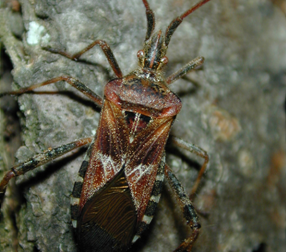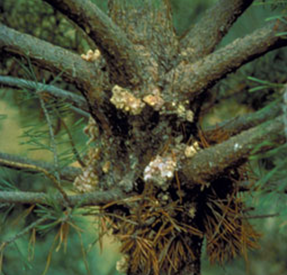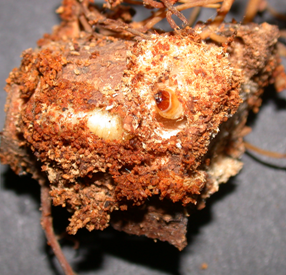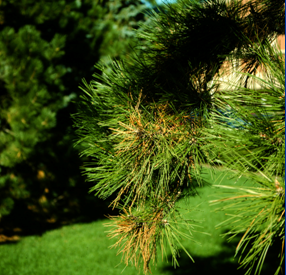
Phil Pellitteri, UW Insect Diagnostic Lab
Revised: 4/27/2004
Item number: XHT1052
Western conifer seed bugs belong to the leaf-footed bug family Coreiidae. Adults are 3∕4 of an inch long, elongate, reddish to dull brown with a faint, white zigzag straight line across the center of the wings. They have long, thin antennae and hind legs that are flattened (leaf-like). Western conifer seed bugs can fly readily and may make a buzzing noise if disturbed. Western conifer seed bugs also have well developed scent glands that emit strong pine-like odors. For that reason they are sometimes incorrectly called stink bugs. Western conifer seed bugs are also often mistakenly identified as assassin bugs.
Western conifer seed bugs have become more numerous in Wisconsin during the last five years. They can become a nuisance when they crawl up the sides of buildings during September and October. Sometimes they cluster in small groups and enter buildings at the onset of cold weather as they seek a protected site to spend the winter. If they can crawl under siding or through other openings into the home, these insects will overwinter in the house and re-emerge on warm, sunny days during the winter and spring months. Western conifer seed bugs do not bite or cause damage in the home.
Life cycle: Usually a single generation of Western conifer seed bugs occurs each year. Western conifer seed bugs have a piercing, sucking moth part, and nymphs (immature insects) feed by sucking nutrients from the seed cones of white, red, Scots, Austrian, and mugo pine, white spruce, Douglas fir and hemlock. This feeding damage does not hurt the tree, but reduced seed production may result from heavy infestations.
Control: The first line of defense against Western conifer seed bugs is to prevent their entry into the home. Screen attic, overhang, and wall vents to mechanically block points of entry for the insect. Eliminate or caulk gaps around door and window frames and soffits, and tighten loose-fitting screens, windows or doors. Insecticidal soap sprays or general insecticides can be used to kill insects clustered on the outside during the fall. When adults find their way indoors, simply vacuum or hand-remove them.
For more information: Contact your county Extension agent/educator.
Download Article





 Zimmerman Pine Moth
Zimmerman Pine Moth Pine Root Collar Weevil
Pine Root Collar Weevil Diplodia Shoot Blight and Canker
Diplodia Shoot Blight and Canker White Grubs on Christmas Trees
White Grubs on Christmas Trees


